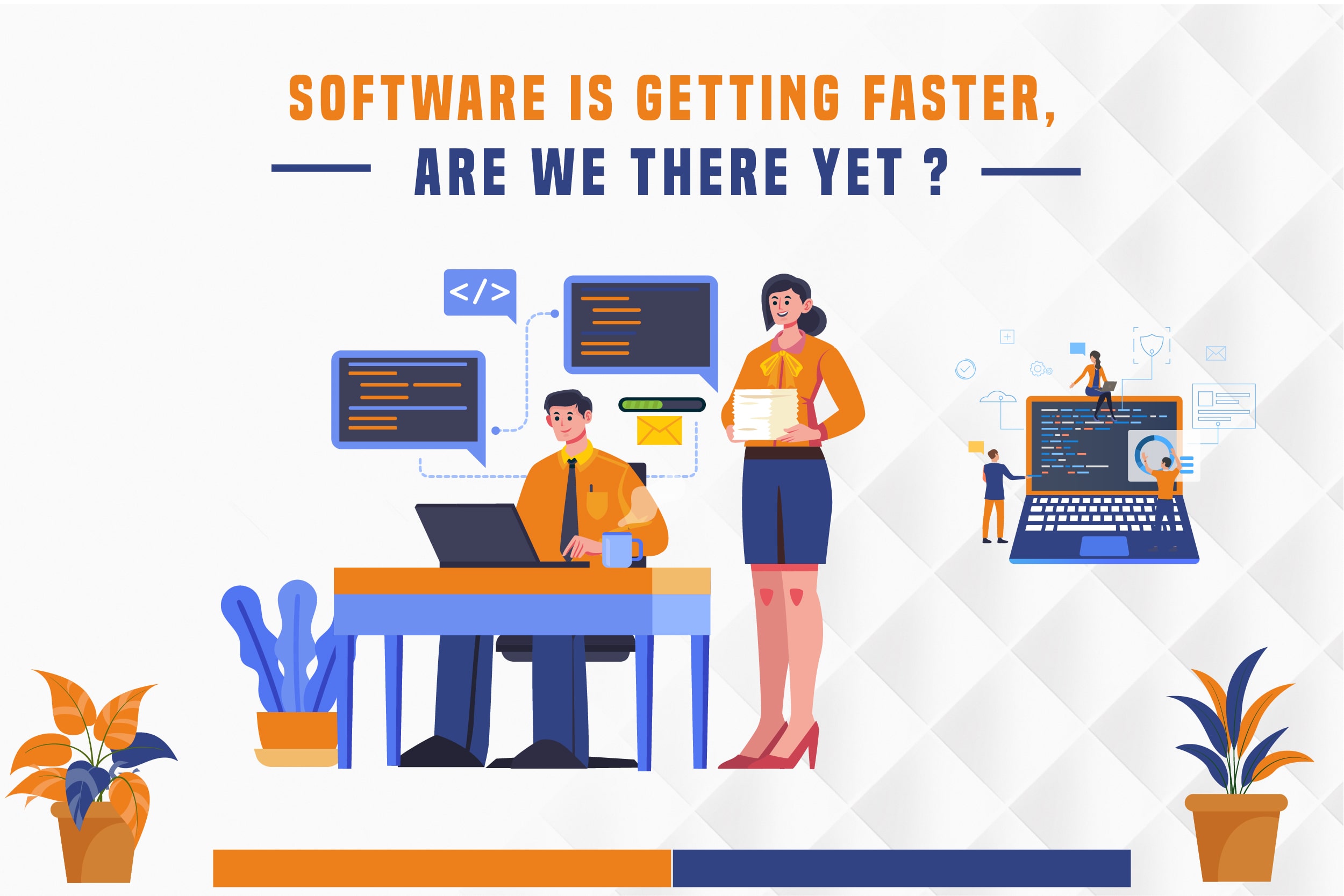
Software Is Getting Faster, Are We There Yet?
In today's fast-paced digital world, speed is of the essence. Whether it's loading a webpage, streaming a movie, or processing data, we all want our software to be as fast as possible. Over the years, significant advancements in hardware and software technologies have made our devices faster and more efficient. But the question remains: are we there yet? Is software speed now at its peak, or is there still room for improvement?
The Evolution of Software Speed
The journey towards faster software has been a long and fascinating one. Software speed is influenced by both hardware and software optimizations. Let's explore how both factors have contributed to the quest for faster software.
1. Hardware Advancements
The relentless pursuit of faster and more powerful hardware has played a pivotal role in making software faster. Moore's Law, which suggests that the number of transistors on a microchip doubles approximately every two years, has held true for several decades. This continuous increase in computing power has led to faster processors, more memory, and better graphics capabilities.
Additionally, the development of solid-state drives (SSDs) has revolutionized data storage. SSDs are significantly faster than traditional hard disk drives (HDDs), resulting in quicker boot times and improved application loading speeds. Moreover, advances in networking technology, such as the rollout of 5G networks, have reduced latency and boosted internet speeds, further enhancing the overall software experience.
2. Software Optimizations
While hardware advancements are crucial, software optimizations are equally important in achieving faster performance. Software developers have been refining their code to make it more efficient and resource-friendly. Here are some key areas where software optimizations have made a significant impact:
Multithreading:
Modern software is designed to take advantage of multi-core processors. By splitting tasks into smaller threads that can run concurrently, software can make the most of available hardware resources, resulting in faster execution. For understanding the functioning process, in-depth Technical Training Corporate is crucial.
Just-In-Time Compilation (JIT):
JIT compilation is a technique used by programming languages like Java and JavaScript to convert code into machine code at runtime, optimizing performance. This approach allows the software to adapt to the underlying hardware, further boosting speed.
Caching:
Caching mechanisms store frequently accessed data in a faster-to-access location, reducing the need to fetch data from slower storage devices. Caching has been widely used in web browsers and databases to improve speed.
Algorithmic Improvements:
Refining algorithms and data structures can lead to significant speed enhancements. For example, search engines use sophisticated algorithms to provide lightning-fast search results.
Challenges and Limitations
While software speed has come a long way, there are still challenges and limitations that need to be addressed:
Diminishing Returns:
As hardware becomes more powerful with the ongoing Technical Transformation, the law of diminishing returns comes into play. The performance gains from each hardware generation become less substantial, making it increasingly challenging to achieve significant speed improvements.
Complexity:
Modern software is incredibly complex, with layers of abstraction, dependencies, and integrations. Managing this complexity while optimizing for speed can be a daunting task.
Resource Consumption:
Some software optimizations may lead to increased resource consumption, which can be detrimental to users with limited hardware resources. Striking a balance between speed and resource efficiency is crucial.
Security Concerns:
Speed optimizations should not compromise security. Rushing through code can introduce vulnerabilities, making software more susceptible to attacks.
User Experience:
While software speed is important, it should not come at the expense of a smooth and intuitive user experience. Fast software that is difficult to use or understand may not be effective.
The Future of Software Speed
So, are we there yet? The answer is both yes and no. We have made incredible strides in improving software speed, thanks to advancements in hardware and software optimizations and the Technical Transformation. However, there is always room for improvement, and the pursuit of faster software is an ongoing journey.
Here are some trends and technologies that are likely to shape the future of software speed:
Quantum Computing:
Quantum computers have the potential to revolutionize computing by performing complex calculations at speeds unimaginable with classical computers. While quantum computing is still in its infancy, it holds promise for greater Technical Learning in solving problems that are currently computationally infeasible.
Edge Computing:
Edge computing brings processing closer to the data source, reducing latency and improving response times. This approach is particularly important for applications that require real-time processing, such as autonomous vehicles and IoT devices.
Artificial Intelligence (AI):
AI-powered optimizations can dynamically adapt software to user behavior and hardware conditions, further enhancing speed and efficiency.
6G Networks:
The development of 6G networks is expected to deliver even faster and more reliable connectivity, enabling new applications and services that demand higher speeds.
Final Words
Software is indeed getting faster, but the journey is far from over. Hardware advancements and software optimizations have brought us closer to the goal of instantaneous computing, but challenges and limitations remain. As technology continues to evolve, the future of software speed looks promising, with quantum computing, edge computing, AI, and faster networks on the horizon.
Ultimately, the pursuit of faster software is driven by our insatiable need for speed, convenience, and efficiency. As long as technology continues to advance, so too will our quest for ever-faster software. So, while we may not be "there" yet, the journey towards faster software is one that will continue to captivate and drive the tech industry for years to come.
